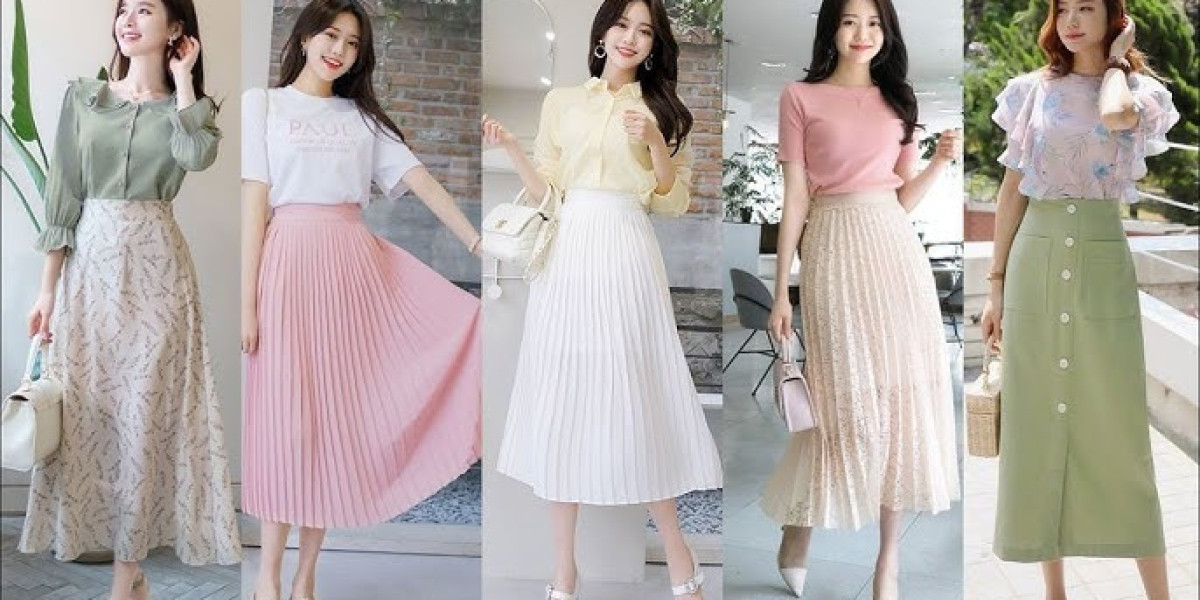Korean Fashion Designing for Girls: A Comprehensive Overview
Korean fashion has emerged as a global trendsetter, especially in the realm of girls’ fashion. The influence of K-pop, K-dramas, and Korean beauty standards has created a unique fashion culture that is both vibrant and innovative. This content piece will explore various aspects of Korean fashion designing for girls, from its historical roots to modern-day trends, including the role of traditional clothing, the impact of media, and the rise of Korean fashion designers.
1. The Evolution of Korean Fashion
Korean fashion for girls has undergone a significant transformation over the past century. The journey from traditional Hanbok to contemporary streetwear is a fascinating tale of cultural adaptation, modernization, and global influence.
1.1 Traditional Hanbok
The Hanbok, Korea’s traditional attire, has been worn for centuries and continues to be an essential part of Korean culture. For girls, the Hanbok typically consists of a jeogori (a short jacket with long sleeves) and a chima (a full, wrap-around skirt). The Hanbok's design is characterized by vibrant colors, simple lines, and flowing fabrics, symbolizing elegance and modesty.
Though Hanbok is now mostly reserved for special occasions such as weddings, festivals, and holidays, its influence is still evident in modern Korean fashion. Designers often incorporate elements of the Hanbok into contemporary designs, creating a fusion of the old and the new.
1.2 Western Influence and Modernization
The early 20th century saw Korea under Japanese occupation, and with it came the influence of Western fashion. Post-liberation, Korea began to develop its fashion identity, merging Western styles with traditional Korean aesthetics. The 1960s and 1970s marked the beginning of Korea's fashion industry, with the introduction of mass-produced clothing and the rise of local fashion designers.
The economic boom of the 1980s and 1990s further propelled the fashion industry, making Korea one of the leading fashion hubs in Asia. Girls' fashion during this period began to reflect global trends, with an emphasis on individuality, experimentation, and a blend of cultural influences.
1.3 The Rise of K-pop and K-fashion
The global phenomenon of K-pop has had a profound impact on Korean fashion. K-pop idols have become fashion icons, setting trends that are followed by millions of fans worldwide. Girls' fashion in Korea today is heavily influenced by the styles of K-pop idols, from edgy streetwear to sophisticated high fashion.
The Hallyu wave (Korean Wave) has not only popularized K-pop but also introduced Korean fashion to the world. International fashion brands collaborate with Korean designers, and Korean fashion weeks are now major events on the global fashion calendar.
2. Key Elements of Korean Fashion for Girls
Korean fashion for girls is characterized by several key elements that set it apart from other fashion styles. These elements include a focus on individuality, a blend of traditional and modern styles, attention to detail, and an emphasis on comfort and practicality.
2.1 Individuality and Expression
Korean fashion encourages self-expression and individuality. Girls in Korea are not afraid to experiment with different styles, whether it’s mixing and matching bold patterns, layering clothing, or accessorizing with unique pieces. This sense of creativity is a hallmark of Korean fashion, where the goal is to stand out and make a statement.
2.2 Fusion of Traditional and Modern Styles
As mentioned earlier, Korean fashion often incorporates elements of traditional clothing, such as the Hanbok, into modern designs. This fusion creates a unique aesthetic that blends the old with the new. For example, modern Hanbok-inspired dresses may feature the flowing lines and vibrant colors of traditional Hanbok but with a contemporary twist, such as shorter lengths or asymmetrical designs.
2.3 Attention to Detail
Korean fashion is known for its meticulous attention to detail. Whether it’s the choice of fabric, the placement of seams, or the selection of accessories, every aspect of the outfit is carefully considered. This attention to detail ensures that each piece is not only stylish but also of high quality.
2.4 Comfort and Practicality
While style is important, comfort and practicality are equally valued in Korean fashion. Girls’ clothing in Korea often features soft fabrics, loose-fitting silhouettes, and practical designs that are suitable for everyday wear. This emphasis on comfort allows girls to move freely and confidently, without sacrificing style.
3. Popular Korean Fashion Styles for Girls
Korean fashion is diverse, offering a wide range of styles that cater to different tastes and preferences. Some of the most popular styles for girls include streetwear, ulzzang, preppy, and romantic.
3.1 Korean Streetwear
Streetwear is one of the most prominent styles in Korean fashion, especially among younger girls. This style is characterized by oversized clothing, bold graphics, and a mix of casual and sporty elements. Hoodies, baggy pants, sneakers, and caps are common staples of Korean streetwear.
Korean streetwear often incorporates elements of Western street fashion but with a unique twist that reflects Korean culture. For example, girls may pair oversized graphic tees with mini skirts or layer a hoodie under a dress for a playful yet edgy look.
3.2 Ulzzang (Best Face)
Ulzzang, which translates to "best face," is a style that emphasizes looking cute and perfect. The ulzzang look is characterized by flawless skin, big eyes, and a sweet, innocent appearance. In terms of fashion, ulzzang girls often wear pastel-colored clothing, cute dresses, and accessories like bows, headbands, and cute bags.
The ulzzang style is all about creating a doll-like appearance, with a focus on beauty and femininity. This style is popular among girls who want to achieve a youthful and innocent look.
3.3 Preppy Style
The preppy style in Korean fashion is inspired by the traditional uniforms worn by students in prestigious schools. This style is characterized by neat, polished outfits, often featuring blazers, pleated skirts, knee-high socks, and loafers. The preppy style is both chic and sophisticated, making it a popular choice for girls who want a more refined and put-together look.
In Korean fashion, the preppy style is often given a modern twist, with bright colors, bold patterns, and playful accessories. This combination of classic and contemporary elements makes the preppy style a versatile option for girls.
3.4 Romantic Style
The romantic style in Korean fashion is characterized by soft, feminine clothing that exudes elegance and grace. This style often features flowing dresses, lace, ruffles, and floral prints. The romantic style is perfect for girls who want to embrace their femininity and create a dreamy, ethereal look.
In addition to dresses, the romantic style may also include skirts, blouses, and cardigans in soft pastel colors. Accessories such as pearl necklaces, delicate earrings, and dainty handbags complete the romantic look.
4. The Impact of Korean Media on Fashion
Korean media, including K-pop, K-dramas, and social media, plays a significant role in shaping fashion trends for girls. The influence of Korean celebrities and influencers cannot be overstated, as they set the tone for what is considered fashionable.
4.1 K-pop Idols as Fashion Icons
K-pop idols are among the most influential figures in Korean fashion. Their stage outfits, airport fashion, and even casual looks are closely followed by fans, who often try to emulate their style. K-pop idols are known for their bold and experimental fashion choices, which often push the boundaries of conventional fashion.
Many K-pop idols collaborate with fashion brands, serving as ambassadors or even launching their own fashion lines. This close relationship between K-pop and fashion has helped to elevate Korean fashion on the global stage.
4.2 K-dramas and Fashion
K-dramas are another major influence on Korean fashion. The outfits worn by characters in popular dramas often become trendsetters, with fans eager to replicate the looks of their favorite characters. From chic office wear to cozy casual outfits, K-dramas showcase a wide range of styles that appeal to different audiences.
K-dramas also play a role in promoting traditional Korean fashion, with period dramas often featuring elaborate Hanbok costumes. These dramas help to keep traditional Korean fashion alive and relevant in modern times.
4.3 The Role of Social Media
Social media platforms such as Instagram, TikTok, and YouTube have become essential tools for spreading Korean fashion trends. Influencers and fashion bloggers share their outfits, styling tips, and fashion hauls with millions of followers, making it easier for girls to stay updated on the latest trends.
Social media also allows for a more interactive fashion experience, with followers able to engage with influencers, ask questions, and even purchase items directly through links. This democratization of fashion has made it more accessible to a global audience, further cementing Korean fashion's place on the world stage.
5. The Role of Korean Fashion Designers
Korean fashion designers have played a crucial role in shaping the landscape of fashion for girls. Their innovative designs, attention to detail, and ability to blend traditional and modern elements have made them leaders in the global fashion industry.
5.1 Renowned Korean Fashion Designers
Several Korean fashion designers have gained international recognition for their work. Designers such as Lie Sang Bong, Ji Haye, and Kim Seo Ryong have made significant contributions to the fashion industry, both in Korea and abroad. Their designs are known for their creativity, elegance, and ability to push the boundaries of fashion.
These designers often draw inspiration from Korean culture, incorporating traditional elements into their designs while also embracing modern trends. Their work has helped to establish Korean fashion as a force to be reckoned with on the global stage.
5.2 Emerging Designers and Brands
In addition to established designers, there is a new generation of emerging designers and brands that are making waves in the fashion industry. Brands.








